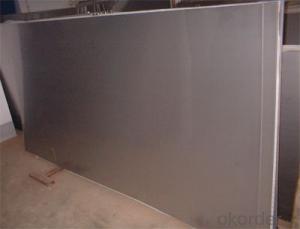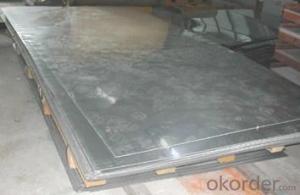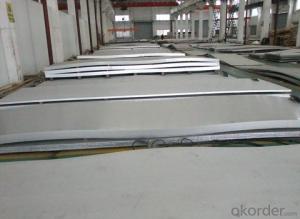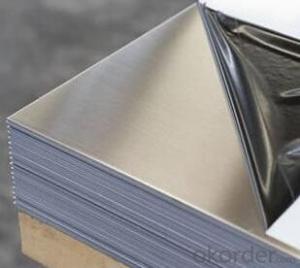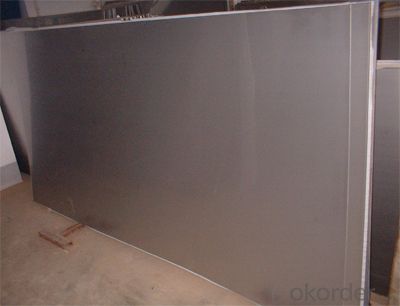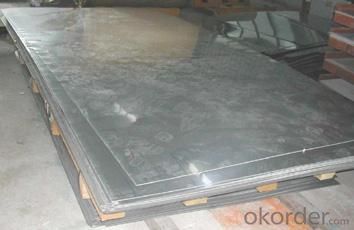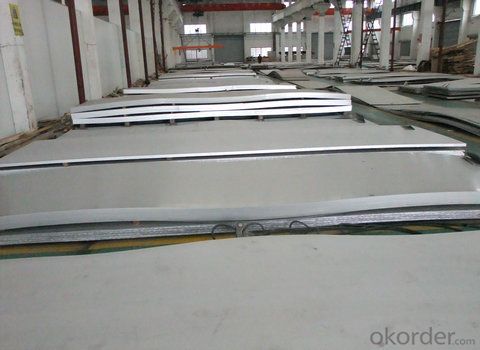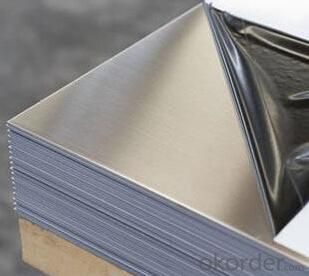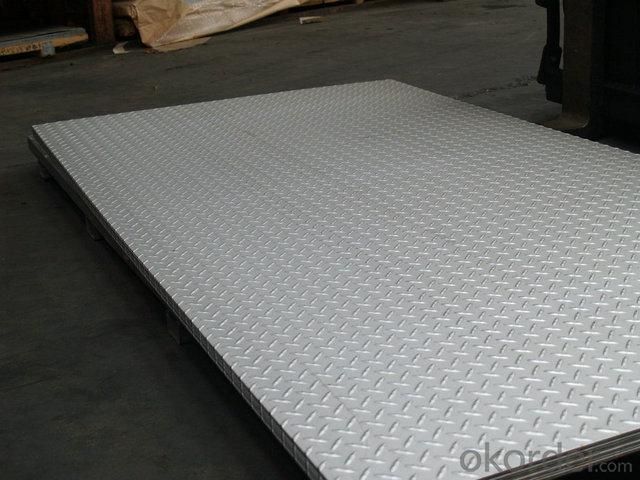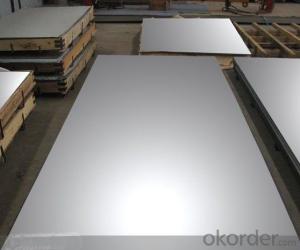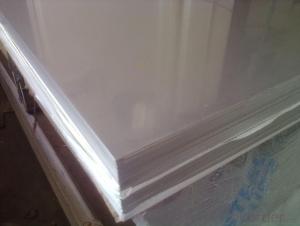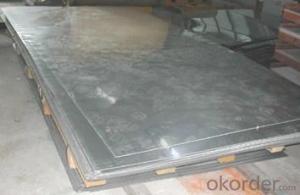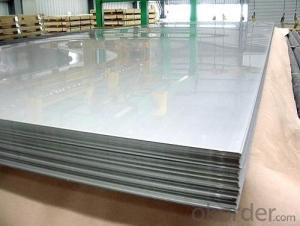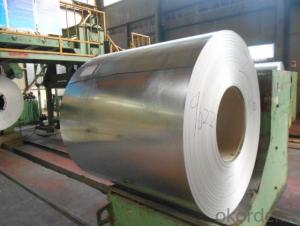Stainless Steel Sheet and Plate with Crazy Discount
- Loading Port:
- Shanghai
- Payment Terms:
- TT OR LC
- Min Order Qty:
- 10000 m.t.
- Supply Capability:
- 5000000 m.t./month
OKorder Service Pledge
OKorder Financial Service
You Might Also Like
Specifications of stainless steel
304 stainless Steel Plate
stainless steel plate,steel sheet,steel plate
Standard: ASTM,GB,DIN,JIS,ISO,EN,etc.
TISCO stainless Steel Plate 304/NO.1 finished
stainless steel plate,steel sheet,steel plate
Standard: ASTM,GB,DIN,JIS,ISO,EN,etc.
Delivery short and low cost advantage.
Description of stainless steel:
stainless steel plate,hot rolled stainless steel plate,cold rolled stainless steel plate,stainless steel sheet,steel sheet,sheet
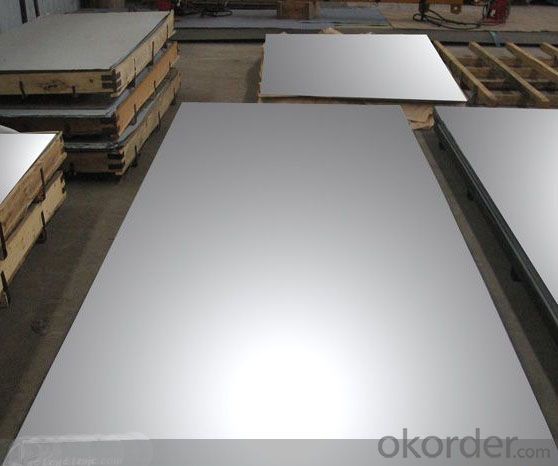
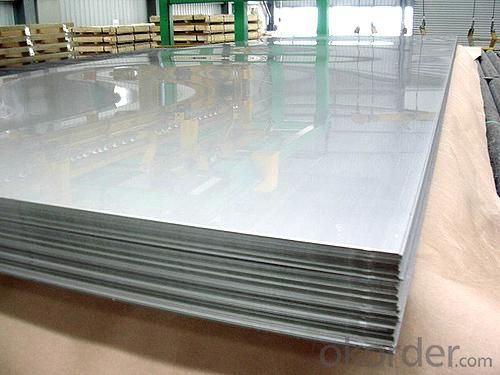

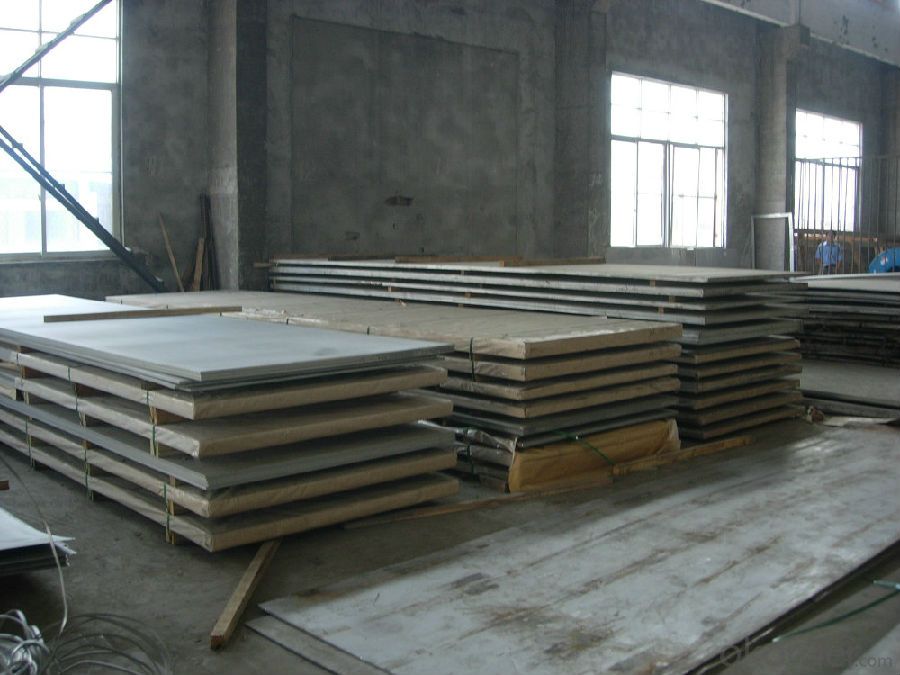
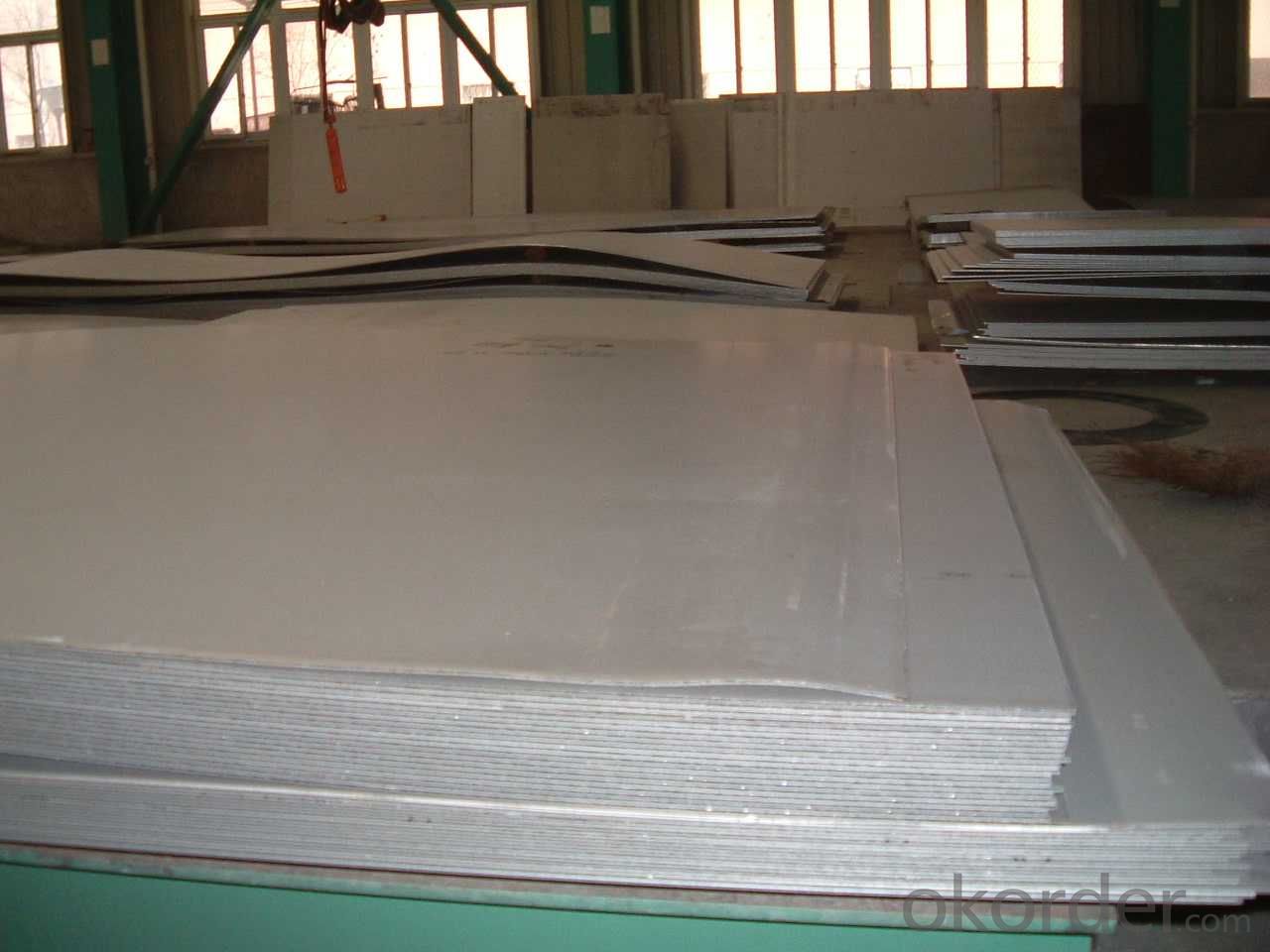
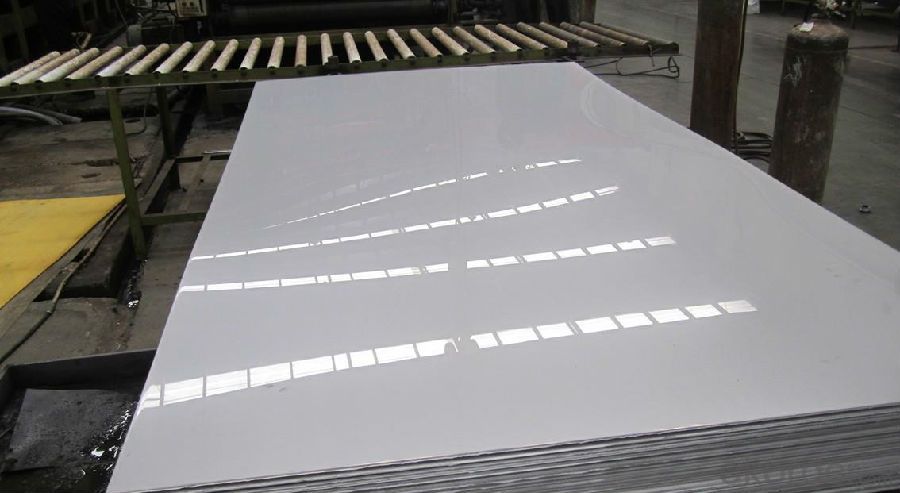
Material of stainless steel:
304,304L,309S,310S,316,316L,316Ti,317L,317L,321,347H,409,409L,410S,420,430,201,202,etc.
Thickness of stainless steel:
From 0.3mm to 100mm
Width of stainless steel:
1000mm,1219mm,1250mm,1500mm,1800mm,2200mm,2500mm or as your requirement
Length of stainless steel:
2000mm,2438mm,2500mm,6000mm,6096mm or as your requirement
Application of stainless steel:
Stainless steel plate applies to construction field, ships building industry, petroleum & chemical industries, war and electricity industries, food processing and medical industry, boiler heat exchanger, machinery and hardware fields. Our company has cooperative relation between the domestic agents. Stainless steel plate can be made accordingto the customers requirements. Fasten delivery. Quality assured.Welcome to order more.
Contacts
If you have any question,please feel free to contact us.
- Q: Can stainless steel sheets be used for hygienic environments?
- Yes, stainless steel sheets can be used for hygienic environments. Stainless steel is a popular choice for such environments due to its inherent properties that make it highly resistant to corrosion, heat, and chemical damage. Its smooth and non-porous surface is easy to clean, preventing the accumulation of bacteria, mold, or other contaminants. Stainless steel is also non-reactive and does not release any harmful substances, making it suitable for sensitive environments such as food processing facilities, hospitals, pharmaceutical labs, and cleanrooms. Additionally, stainless steel is durable and long-lasting, providing excellent hygiene and cleanliness for extended periods. Overall, stainless steel sheets are a reliable and hygienic choice for various applications in environments that prioritize cleanliness and sanitation.
- Q: What's the difference between 304 stainless steel and 314?
- 304 is equivalent to 0Cr18Ni9 stainless steel in our country,314 is equivalent to 1Cr25Ni20Si2 stainless steel in our country
- Q: What are the benefits of using brushed stainless steel sheets in hospitality design?
- There are several benefits of using brushed stainless steel sheets in hospitality design. Firstly, brushed stainless steel sheets add a sleek and modern aesthetic to any space. The brushed finish creates a unique texture and visual appeal, making it a popular choice in contemporary design. This material can elevate the overall look and feel of a hospitality establishment, giving it a sophisticated and upscale ambiance. Secondly, brushed stainless steel sheets are highly durable and long-lasting. Stainless steel is known for its resistance to corrosion, scratches, and stains. In a high-traffic environment like a hotel or restaurant, where there is constant use and potential for spills, this durability is crucial. These sheets can withstand the wear and tear of daily use, ensuring they maintain their pristine appearance for years to come. Thirdly, brushed stainless steel sheets are easy to clean and maintain. They are non-porous, meaning they do not absorb liquids or odors. This makes them hygienic and suitable for use in hospitality settings where cleanliness is of utmost importance. A simple wipe down with a mild detergent is usually sufficient to remove any dirt or smudges, making it a practical choice for busy establishments. Additionally, brushed stainless steel sheets are available in a variety of finishes and colors, allowing for creative customization. This versatility enables designers to incorporate them into various design schemes, whether it be a minimalist, industrial, or even a more traditional look. The ability to choose from different textures and shades ensures that brushed stainless steel sheets can seamlessly integrate with the overall design concept of a hospitality space. Lastly, brushed stainless steel sheets are environmentally friendly. Stainless steel is fully recyclable, making it a sustainable choice in design. By opting for this material, hospitality establishments can contribute to reducing waste and minimizing their environmental footprint. In conclusion, the benefits of using brushed stainless steel sheets in hospitality design are numerous. From its aesthetic appeal and durability to its ease of maintenance and environmental sustainability, this material is an excellent choice for creating a stylish and functional space in the hospitality industry.
- Q: How do you remove heat discoloration from stainless steel sheets?
- To effectively remove heat discoloration from stainless steel sheets, various techniques can be employed. One effective approach involves utilizing a specialized stainless steel cleaner or polish specifically formulated for eliminating heat discoloration. These products often contain gentle abrasives that aid in removing the discolored layer. Adhering to the instructions provided, apply the product to the affected area using a soft cloth or sponge. Employ a gentle circular motion while rubbing, then rinse the surface with water and thoroughly dry it. Another viable option entails creating a paste by combining equal parts baking soda and water. Apply this mixture to the discolored region and gently rub it in using a soft cloth. Rinse thoroughly with water and dry the surface completely. Should the discoloration persist despite previous attempts, employing a stainless steel scratch eraser or fine-grit sandpaper can be considered. It is crucial to exercise caution when using these methods, as they possess the potential to scratch the stainless steel surface. Always conduct a preliminary test in a small, inconspicuous area and proceed with care. It is worth emphasizing that preventing heat discoloration is key to maintaining stainless steel sheets' appearance. Utilizing heat-resistant pads or trivets beneath hot pots and pans can effectively hinder heat transfer to the stainless steel surface. Additionally, avoiding direct contact with high heat sources, such as keeping stainless steel sheets at a safe distance from stovetops or ovens, can significantly minimize the occurrence of discoloration.
- Q: How do you determine the weight of a stainless steel sheet?
- To determine the weight of a stainless steel sheet, one must take into account its dimensions, thickness, and density. The first step involves using a measuring tool, such as a ruler or caliper, to measure the length, width, and thickness of the sheet. It is crucial to ensure that all measurements are taken in the same unit of measurement, such as inches or millimeters, for accuracy. Next, the density of stainless steel needs to be determined. Typically, stainless steel has a density of approximately 7.9 grams per cubic centimeter (g/cm³) or 7900 kilograms per cubic meter (kg/m³). However, it is important to note that this value may slightly vary depending on the specific grade or alloy of stainless steel being used. Once the dimensions and density are known, the weight can be calculated using the formula: weight = volume × density. To find the volume, one should multiply the length, width, and thickness of the sheet. For instance, if a stainless steel sheet measures 1 meter by 1 meter and has a thickness of 2 millimeters, the volume would be 0.001 cubic meters (1m x 1m x 0.002m). By utilizing the density of stainless steel (7900 kg/m³), one can then determine the weight by multiplying the volume by the density. In the given example, the weight of the stainless steel sheet would amount to 7.9 kilograms (0.001m³ x 7900 kg/m³). It is essential to bear in mind that this calculation provides an approximate weight, assuming a consistent thickness throughout the entire sheet. Furthermore, variations in composition or manufacturing processes may result in slight deviations in the density of the stainless steel, thereby affecting the accuracy of the weight calculation.
- Q: Can stainless steel sheets be used for architectural canopies?
- Yes, stainless steel sheets can be used for architectural canopies. Stainless steel is a versatile material that offers several benefits in architectural applications, including canopies. Firstly, stainless steel is highly durable and resistant to corrosion, making it suitable for outdoor installations. This ensures that the canopy will withstand harsh weather conditions and maintain its appearance over time. Additionally, stainless steel has a sleek and modern aesthetic that can enhance the overall design of the canopy. It can be polished to a mirror-like finish or brushed to create a unique texture, providing architects with various options to achieve their desired look. Stainless steel sheets are also available in different thicknesses, allowing for customization based on the specific requirements of the canopy. This flexibility ensures that the material can support the weight of the structure and any additional elements, such as lighting or signage. Moreover, stainless steel is a sustainable choice for architectural canopies as it is fully recyclable. This aligns with the growing demand for environmentally-friendly construction materials and practices. In summary, stainless steel sheets are a suitable and popular choice for architectural canopies due to their durability, aesthetic appeal, flexibility, and sustainability.
- Q: What is the electrical conductivity of stainless steel sheets?
- The electrical conductivity of stainless steel sheets can vary depending on the specific grade and composition of the stainless steel. Generally, stainless steel is not known for its high electrical conductivity compared to other metals such as copper or aluminum. However, it still possesses some level of electrical conductivity. The electrical conductivity of stainless steel is typically lower than that of most metals because it contains a higher proportion of non-conductive elements such as chromium and nickel. Stainless steel is often chosen for its corrosion resistance rather than its electrical conductivity. However, it can still be used in certain electrical applications where moderate conductivity is acceptable.
- Q: What welding equipment do we need for welding stainless steel sheet and stainless steel square tube?
- 1 argon arc welding machine! If the person who has not been married, as little as possible, that thing has radiation, long time use of physiology is influential. You know what you do.2, regardless of the front and back can be, as long as it looks beautiful and practical.3, welding technology is good, it will not be ugly after welding.4, only the use of technology to make up for the lack of machinery, and then cattle B hardware, there is no good software is not good.5, welding rod, protective mask and so on.
- Q: What are the different types of patterned finishes available for stainless steel sheets?
- Stainless steel sheets come in a variety of patterned finishes, each offering a unique aesthetic and functionality. Some of the most commonly used finishes include: 1. Diamond: This finish has a raised diamond-shaped texture on the surface, providing better grip and slip resistance. It is often used for flooring or industrial equipment. 2. Linen: The linen finish resembles woven fabric, adding a subtle elegance to stainless steel sheets. It is commonly used in interior design applications like wall cladding or decorative panels. 3. Checkered: This finish creates a checkerboard-like appearance with a grid of raised squares or rectangles. It adds visual interest and can give a retro or industrial look to stainless steel sheets. 4. Bead Blasted: In this finish, fine glass beads are blasted onto the surface to create a matte texture with a slightly rough surface. It is often used in architectural applications to provide a modern and uniform appearance while reducing glare and fingerprints. 5. Etched: This finish involves chemically altering the surface to create intricate patterns or designs. It can range from simple line patterns to complex images and is commonly used for decorative purposes like signage, artwork, or custom designs. 6. Sandblasted: Similar to bead blasting, sandblasting uses high-pressure sand or other abrasive materials to create a textured surface. It provides a rougher and more pronounced pattern, making it suitable for industrial or rugged applications. 7. Mirror: Although not technically a patterned finish, the mirror finish is highly popular for stainless steel sheets. It is achieved through a series of polishing and buffing processes, resulting in a highly reflective surface similar to a mirror. It is commonly used in architectural elements like cladding or decorative accents. In conclusion, the choice of patterned finish for stainless steel sheets depends on the desired aesthetic, functionality, and specific application requirements. Each finish offers a distinct look and texture, providing endless possibilities in design.
- Q: Are stainless steel sheets good for industrial exhaust systems?
- Yes, stainless steel sheets are excellent for industrial exhaust systems. Stainless steel is known for its high resistance to corrosion, making it a highly durable and long-lasting material for exhaust systems. It can withstand high temperatures and extreme weather conditions, making it suitable for industrial environments. Stainless steel also has excellent strength and can handle the pressure and vibrations associated with exhaust systems. Additionally, stainless steel is easy to clean and maintain, which is important for keeping the exhaust system functioning efficiently. Overall, stainless steel sheets are a great choice for industrial exhaust systems due to their durability, corrosion resistance, and high temperature tolerance.
Send your message to us
Stainless Steel Sheet and Plate with Crazy Discount
- Loading Port:
- Shanghai
- Payment Terms:
- TT OR LC
- Min Order Qty:
- 10000 m.t.
- Supply Capability:
- 5000000 m.t./month
OKorder Service Pledge
OKorder Financial Service
Similar products
Hot products
Hot Searches
Related keywords
